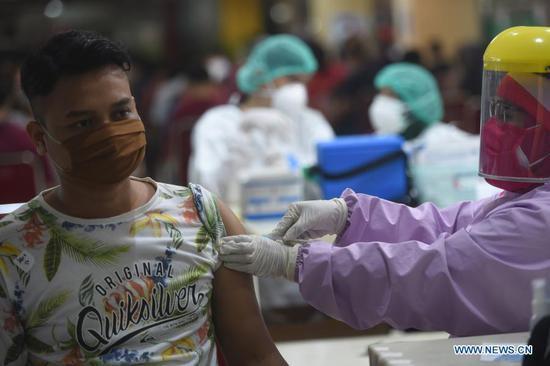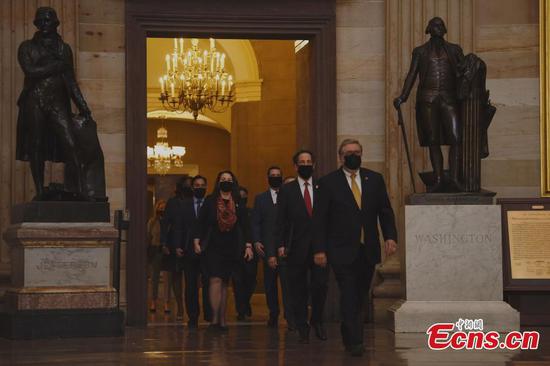While vaccines offer hope of an end to the COVID-19 pandemic, risks to the U.S. economic outlook remain substantial, the U.S. Federal Reserve warned on Friday.
"The COVID-19 pandemic continues to weigh heavily on economic activity and labor markets in the United States and around the world, even as the ongoing vaccination campaigns offer hope for a return to more normal conditions later this year," the Fed said in its semi-annual Monetary Policy Report submitted to the Congress.
"The pace of vaccinations, the rate of decline in the spread of the virus, and the speed with which people return to normal activities all remain highly uncertain, particularly given the emergence of new, apparently more contagious strains," the Fed said, adding the economic outlook depends crucially on the course of the pandemic.
"The pandemic has also disrupted schooling at all levels, which could have persistent negative effects on educational attainment and economic outcomes for affected students," the central bank said, noting the longer-run economic effects of the pandemic are difficult to predict.
The Fed also warned of significant risks of business bankruptcies as business leverage now "stands near historical highs".
"While near-term risks associated with debt service may be limited by large cash balances at large firms, low interest rates, and recently improved earnings prospects, insolvency risks at small and medium-sized firms, as well as at some large firms, remain considerable," the Fed said.
The Fed pledged that monetary policy will continue to "deliver powerful support" to the economy until the recovery is complete, signaling that the central bank would not prematurely tighten monetary policy.
"Tightening monetary policy in the absence of evidence of excessive inflation pressures may result in an unwarranted loss of opportunity for many Americans, whereas if an undue increase in inflation were to arise, policymakers would have the tools to address such an increase," the Fed said.
The central bank last month decided to hold its policy rate near zero and continue its asset purchase program at least at the current pace of 120 billion U.S. dollars per month until it sees "substantial further progress" in employment and inflation.


















































